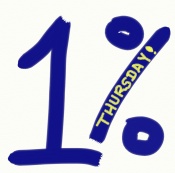This week: Organize your Medical History.
I’m always reminding you that you need to work with a doctor or specialist who knows your medical history. Great, but in this modern world you may have several doctors at one time, or several over the years as you move, change doctors, deal with different conditions, etc.
It’s critical that we be responsible for our own health information. We need to have a handle on it before we can expect our doctors to. After all, it’s more important to us. That key to finding treatment may be something your doctor doesn’t even think to ask you.
There’s lots you can do to organize your medical files. The more organized you are, the better. However, it’s better to do something than nothing.
So if you don’t do anything else, grab a box and start throwing all your medical information in there. Simple, yet effective. A great place to start.
But again, the more organized you are, the better. For example, do you have a record of all the drugs and supplements you’ve taken over a lifetime? Doses? Time taken? Start now. What about family medical history? What conditions and diseases did your grandmother have? Grandfather?
There are many tools online to help you organize, and many insurance companies have tools to help you as well. However, be cautious about putting everything in an online system that could be obsolete in a few years. Keep hard copies.
Ready to get really organized? Here are a few online resources to get you thinking:
What is 1% Thursday?
Every Thursday at Headache and Migraine News (weather permitting) we’ll talk about one measurable, practical thing we can do to make our lives just 1% better. Usually it will be something very easy, sometimes it will be a challenge. Let us know if you try it, or share an idea of your own – and maybe a year from now we’ll see that things have really changed for the better!

